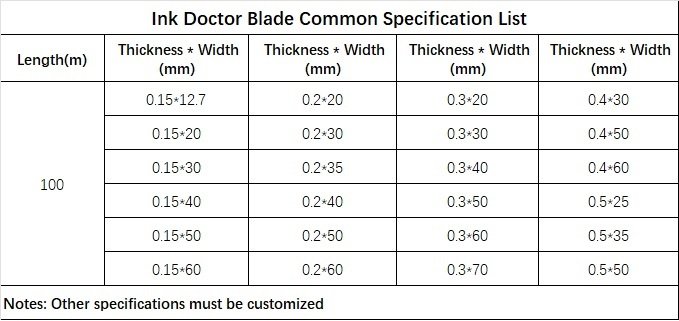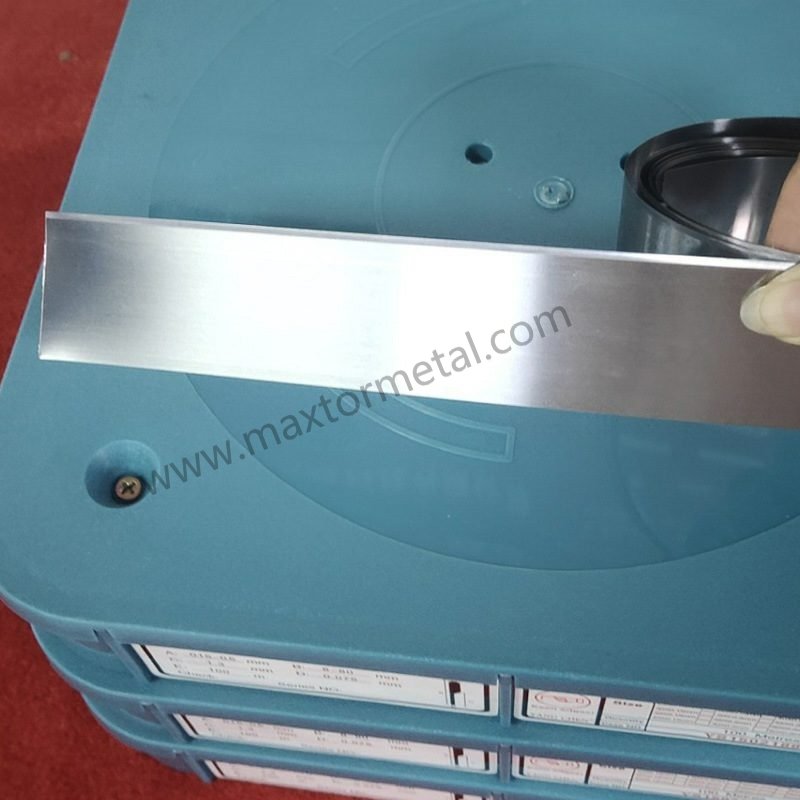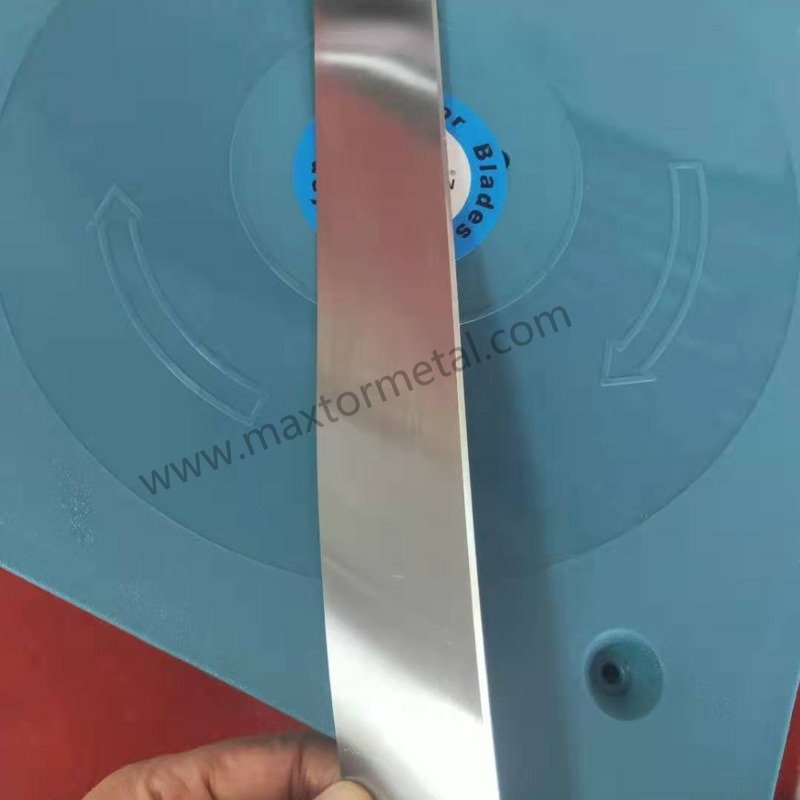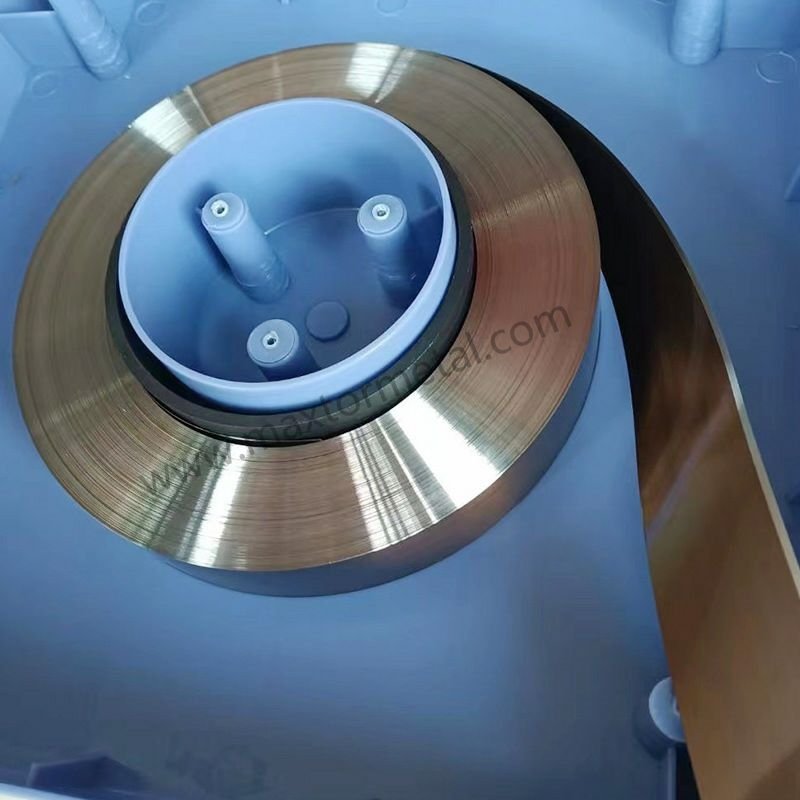| أسماء أخرى | مكشطة الحبر |
|---|---|
| بلد المنشأ | الصين |
| تطبيق | آلات الطباعة، الطباعة بالحفر، الطباعة المرنة، الطباعة البلاستيكية |
| مادة | SK4، C100، 20C |
| رقم الموديل | GP-DB |
| خدمة OEM | متاح |
| شروط الدفع | خطاب الاعتماد، تي/تي، ويسترن يونيون |
| التعبئة | صندوق كرتون, صناديق خشبية |
| وقت التسليم | 7-20 يوم |
شارك على:
Metal Industrial has prioritized meeting customer needs for many years by continuously adding new features to their ink doctor blade. Our blades are used in gravure packaging, flexographic printing, UV flexo, offset varnishing, decorative materials printing, pressure-sensitive printing, screen printing, and coating applications.
تستخدم شركة Metal Industrial خطوط إنتاج CNC دقيقة لإنتاج شفرات إزالة الحبر عالية الجودة. تضمن عمليات الإنتاج والفحص الصارمة لدينا أن تكون منتجاتنا متميزة في صناعة شفرات إزالة الحبر الزائد.
من خلال الالتزام بمعايير الجودة أولاً والتركيز على متطلبات العملاء، تتيح Metal Industrial للعملاء الحفاظ على جودة طباعة متسقة أثناء عمليات الطباعة الطويلة وتقليل وقت التوقف عن العمل.
إن شفرات إزالة الحبر الخاصة بنا مناسبة للطباعة بالحفر والطباعة الفلكسوغرافية. تنشأ مشكلات مثل درجة اللون، والخطوط، والخيوط، والخطوط، وتآكل طبقة الكروم بشكل شائع بسبب تنوع آلات الطباعة والمواد الأساسية. تقدم Metal Industrial مجموعة من الشفرات لتلبية هذه الاحتياجات المتنوعة. بالنسبة لطباعة التغليف بالحفر، غالبًا ما تتسبب الأحبار السميكة في حدوث خطوط وتآكل إضافي للشفرات والأسطوانات. تتكيف شفراتنا مع هذه الأحبار ويمكن إعادة استخدامها، مما يقلل من وقت التوقف عن العمل.

تعتبر الشفرات الخزفية Metal Industrial مثالية لعمليات الطلاء والتصفيح في الطباعة الفلكسوغرافية. تستخدم مكابس الفلكسو الحديثة عادةً بكرات أنيلوكس وشفرات إزالة الحبر لنقل الحبر. يتراوح عرض الطباعة لمطابع الفليكسو من 200 مم إلى 4000 مم. تعمل الأنظمة ذات الشفرة الواحدة مع المطابع الصغيرة، في حين أن الأنظمة المغلقة أفضل مع المطابع المتوسطة والكبيرة. تتراوح سرعات الطباعة من 50 إلى 450 مترًا في الدقيقة. عادةً ما يكون للشفرات العكسية زاوية 30 درجة -40 درجة. نظرًا للسطح الأملس لبكرات أنيلوكس السيراميكية، يجب أن يكون ضغط الشفرة في حده الأدنى. تشمل العوامل التي تؤثر على عمر الشفرة شكل وعدد خطوط خلايا أنيلوكس وسمك الشفرة.
تناسب الشفرات الخزفية Metal Industrial الطباعة الفلكسوغرافية، بشفرات بسمك 0.20 مم وأحيانًا 0.15 مم. لا تتطلب الأنظمة المغلقة شفرات احتياطية، لذا فإن الشفرات القياسية والمشطوفة والمركبة كلها قابلة للتطبيق.
بالنسبة للطباعة ذات الألوان النصفية، مثل طباعة الملصقات، يكون سمك الشفرة عادةً 0.075 مم. المبدأ العام هو أن الشفرات الرقيقة تعمل بشكل أفضل.
متطلبات التثبيت: بالنسبة للطباعة بالحفر، فإن زاوية الاتصال المثالية لتركيب الشفرة هي 55-65 درجة. يمكن أن تؤدي الزاوية الأصغر إلى مسح غير كامل وضباب اللوحة.

A doctor blade is a thin, flexible blade, typically made of metal or plastic, used in various industrial coating and printing processes to control the thickness of a liquid film applied to a surface. In printing, particularly flexography and gravure, the doctor blade plays a crucial role in removing excess ink from the surface of the printing cylinder (anilox roll or gravure cylinder), ensuring that only the ink held within the engraved cells is transferred to the substrate. The term “doctor blade” originates from its function of “wiping off” or controlling the amount of liquid.
Beyond printing, doctor blades are also used in other coating applications to meter or level the thickness of coatings applied to various substrates.
Doctor blades have diverse applications across several industries:
The selection of material for doctor blades is critical and depends on the specific application, the material being processed (ink, coating solution), the substrate, and the speed of operation. Common materials include:
Doctor blades come in various edge profiles and thicknesses to optimize performance for different applications:
The thickness of the شفرة التنظيف also varies depending on the application and the required flexibility and stiffness. Common thicknesses for metal blades range from 0.004″ to 0.020″ or more.
The doctor blade operates by applying controlled pressure against the surface of a rotating cylinder (anilox or gravure) or a substrate being coated.
In printing:
In coating:
The effectiveness of a doctor blade depends on factors such as the blade material, edge profile, thickness, the angle at which it is held against the cylinder or substrate, the applied pressure, the surface condition of the cylinder or substrate, and the properties of the ink or coating being used. Proper selection, setup, and maintenance of the doctor blade are crucial for achieving optimal results in printing and coating processes.
إذا لم تجد شفرة القص التي تبحث عنها، فيمكننا أيضًا تخصيصها، راجع "شفرات مخصصة" لتعلم كيف!
استمتع براحة الاستيراد السلس. من النقل إلى التخليص الجمركي، نحن نتعامل مع العملية بأكملها. كل ما عليك فعله هو دفع ضريبة القيمة المضافة وانتظار وصول بضائعك.
لقد رأينا شفراتنا تُستخدم في عدد لا يحصى من التطبيقات وهي جاهزة للتعامل مع أي مشروع تطرحه علينا - حيث توفر الدقة والمتانة والتسعير التنافسي الذي لا مثيل له.
سواء قدمت رسومات أو مسودات أو عينات، نحن قادرون على الرسم والتصنيع لك. لدينا أيضًا القدرة على المساعدة في تعديل التصميمات والمواصفات الحالية لتحسين أي تطبيق للأدوات الصناعية تقريبًا. يرجى الاتصال بفريق المبيعات المخصص لدينا لمناقشة متطلباتك المحددة.
يتم إجراء سلسلة من الاختبارات والفحوصات للتحكم في الجودة، بما في ذلك فحص العينة الأولى، فحص المواد الواردة والمواد المعتمدة، فحص الجودة أثناء العملية، وفحص الجودة النهائي.
سواء كنت مستوردًا أو موزعًا أو تاجر جملة أو مستخدمًا نهائيًا، نرحب بك للانضمام إلينا بحد أدنى للكمية المطلوبة (MOQ)، وبدون متاعب للاستفسار، ومزيد من الحرية في الشراء.
كن مراقبك الحصري، ونقل منتظم لكل نقطة مهمة في خط الإنتاج، بغض النظر عن المسافة، للسيطرة على تقدم المنتج قدر الإمكان.




1. كيفية استخدام Doctor Blade الصحيح في صناعة الطباعة
ابحث عن المزيد من المدونات ذات الصلة~
Nanjing Metal Industrial CO., Limited
Mingjue Industrial Park, Lishui, Nanjing, Jiangsu, China
ابقَ على اطلاع بآخر أخبارنا.